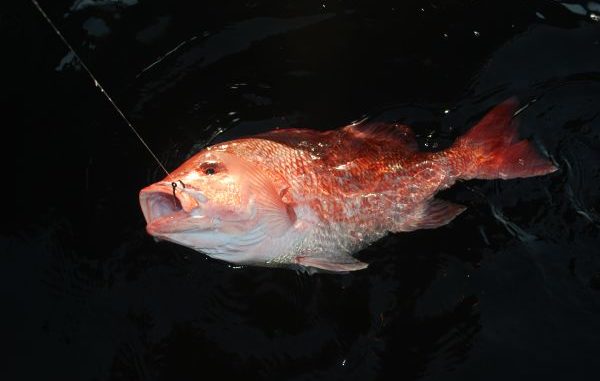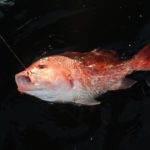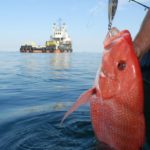
Heads, you lose; tails, you lose
Writing about red snapper biology isn’t a lot of fun. In fact, it’s downright depressing. The 40-day recreational season ended in July. In spite of an increase in the combined recreational-commercial harvest quota from 7.53 million pounds to 8.08 million pounds, the season was eight days shorter than the 2011 season.
Federal managers explain it away by saying that the more the population increases (and increasing it is) the quicker anglers will catch their quota and the shorter the seasons will be.
It has left some wondering how far this scenario can go.
Federal fisheries models are rigid in showing that the fishery is years from recovery. Can this thing get down to a one- or two-week season, anglers wonder. Can it be that the stronger the population becomes, the less opportunity fishermen will have until ultimately, the stock is in great shape but no one can fish it?
Anglers are approaching open revolt.
While fisheries managers explain away anglers’ concerns, some of the problem may be in the mathematical models that managers use to assess the health of fish populations. Two problems exist with such computer models, which are essentially formulas.
Obviously, the model itself must be correct. If the model is improperly built, even the best data will yield a skewed result. Secondly, and probably more importantly, the data used in the model must be accurate. Bad information plugged into the model produces bad results. The old computer adage “garbage in — garbage out” still applies.
Since counting the exact, or even nearly exact, numbers of fish in the sea is impossible, computer models use fisheries catch data to estimate the health of the population. Catch data comes in two forms.
First is fishery-dependent data. This is size, age and reproductive information taken from fish that recreational and commercial fishermen have caught. This would be pretty good data, if only fishermen were completely random in where they fish and what they kept.
In the late 1990s, biologists studying fishery-dependent data showed two peaks in sizes being caught and, it was assumed, in the red snapper population in general. The data taken from catches showed a shortage of middle-aged fish in the population.
But external factors were likely driving the data obtained from the catches. Commercial fishermen were targeting the highest-priced smaller fish (those just over the 16-inch minimum size at the time) and recreational fishermen, battling low creel limits, likely kept only the largest of fish to maximize the meat they brought home.
Fishermen also do not randomly fish all areas that may hold snapper, further skewing the data taken from their catches. Artificial reef structures, including oil and gas platforms, are obviously easier to find and fish than are natural reef bottoms.
In 2009 and 2010, LSU fisheries scientists fished both types of habitat and looked at the results by habitat type. Sure enough, a major difference existed in the red snapper population structure.
Only 41.7 percent of the snapper taken from artificial reefs were mature versus 81 percent of those taken from natural bottoms.
Second is fishery-independent data, such as that above. This is information taken from fish that scientists themselves have caught.
In theory, scientists can remove much of the bias that comes from data taken from others’ catches. They can attempt to fish randomly, not targeting certain areas. And they see what comes up, not just what fishermen bring to the dock.
Unfortunately, this approach isn’t perfect, either. First and most important is that there just isn’t enough research money around to fund large-scale fishery-independent studies. And scale is important. The more numbers that scientists have, the less likely the results they see will be due to random error.
Secondly, biologists are not very good fishermen. They just can’t produce fish as efficiently as can recreational and commercial fishermen. Again the numbers thing comes into play. Any observation made is on much firmer ground if it comes from large numbers of fish rather than small numbers.
Of course, some bias may still exist in fishery-independent data. Much of it is due to the gear used to harvest the fish. Not all gears catch all sizes of fish equally. Even bait used on hooks can influence catches: Some baits are better for one size fish than others of the same species.
What makes red snapper a particularly confounding fish to sample is that different aged fish will use very different habitats. Age 1 and younger red snapper tend to be found on open bottoms where few people fish, rather than near reefs.
After age 1, they move to reef habitats, including oil and gas platforms. Then after age 6, they move away from structures and again spend more time on less-fished, open-bottom areas
Before commercial long lining in waters shallower that 50 fathoms was outlawed, commercial fishermen frequently found concentrations of sows — fish over 20 pounds — on open clay bottoms.
This month, National Oceanic and Atmospheric Administration Fisheries begins work on a new stock assessment. Three workshops will be held to assess the fish population and review the results.
It will be interesting.




